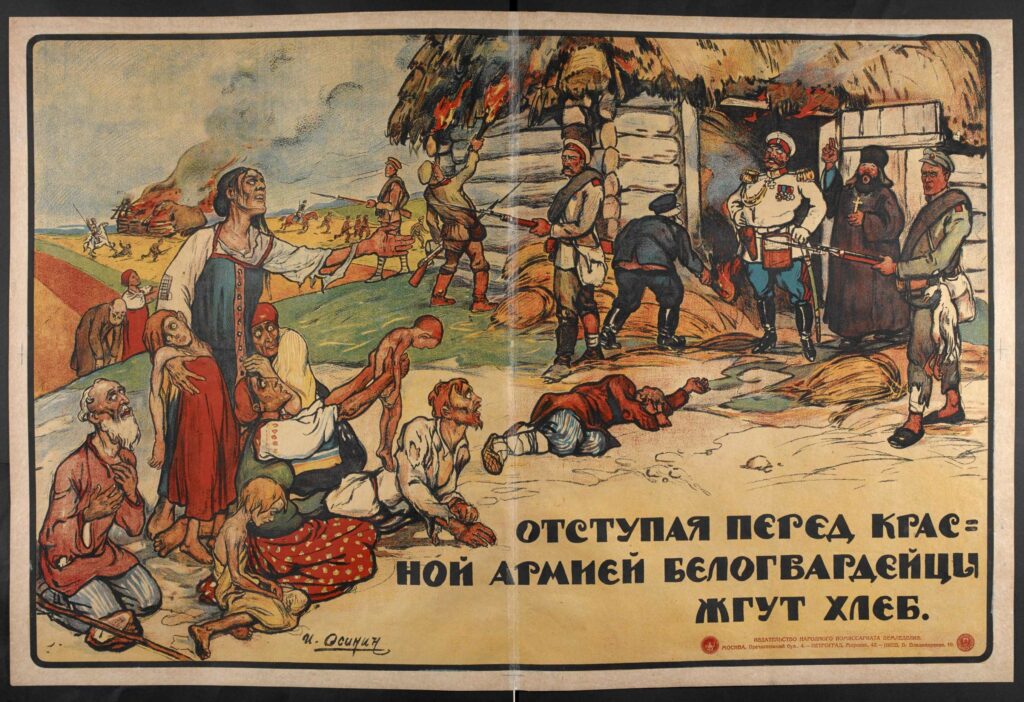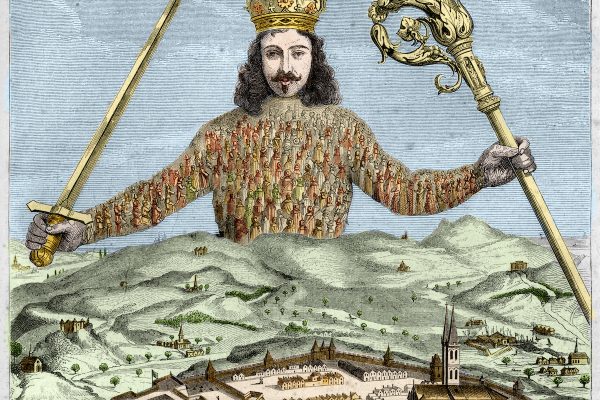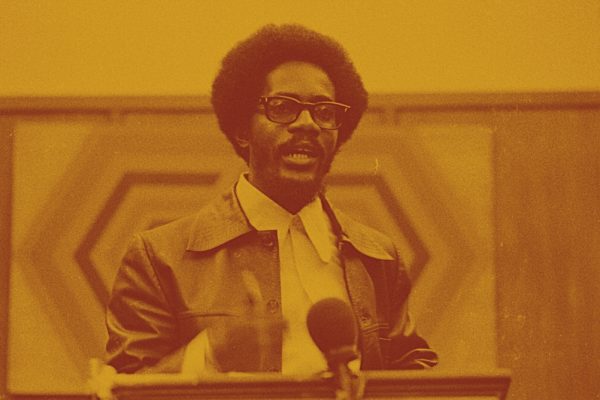The Furies: Violence and Terror in the French and Russian Revolutions
Arno Mayer
Princeton University Press, $28 (cloth)
Few episodes elicit from contemporary historians so much outrage as the French and Russian revolutions. Richard Pipes’s many histories of the Bolsheviks condemn everything from Lenin’s depraved character to the corrupt motivations of Pipes’s scholarly opponents. François Furet’s studies of the French Revolution are filled with delphic censures of Jacobin paranoia and utopian ideology. This denunciatory zeal has not jeopardized historical vision—if anything, it has inspired some of the finest work of a generation. But the antagonism of these scholars toward their subjects points to the central insight of Arno Mayer’s The Furies: there can be no revolution without counterrevolution, for every revolution inevitably summons the fury of its detractors.
Mayer, an emeritus Princeton historian, seeks to temper this hostility toward revolution, or at least to counter the most damning claims of contemporary scholars about the origins of revolutionary violence. Pipes and Furet argue that terror was not an incidental or prophylactic measure reluctantly taken by revolutionaries against genuine enemies. Pipes points out that the Bolsheviks created the Chekha, the brutally repressive precursor to the NKVD and KGB, before any opposition to their rule had coalesced; Furet demonstrates how the Jacobin terror persisted after the French army improved its position in the European theater. They conclude that because revolutionary violence did not track the realities of political conflict, violence must have been the essence of these revolutions. Their leaders resorted to terror either because they were ideologues or because, as Pipes says of Lenin, their “dominant political impulse was and remained hatred.” As Simon Schama, echoing Furet, writes in his book Citizens, “In some depressingly unavoidable sense, violence was the Revolution.”
Mayer, by contrast, minimizes the role of both ideology and the personality of the revolutionaries. Violence, he argues, resulted from seismic collisions of old order and new. Recent historians have lost sight of the tenacity of the old regime, how its defenders refused to bow to the new revolutionary order—and how much of the violence stemmed from confrontations between the two. Indeed, Mayer demonstrates, some of the bloodiest episodes of both revolutions occurred as old animosities—between Christians and Jews, Catholics and Protestants, and contending groups in the countryside—turned into armed antagonisms. Where Pipes and Furet see in revolutionary violence the great sins of modernity—ideological grandiosity and nihilism—Mayer finds the toxic residue of premodernity: the resistance of the old regime, the eruption of ancient hatreds, and the destabilizing effects of civil and international war.
Mayer boasts a long record of intellectual provocation. His first studies of the Versailles Treaty, Political Origins of the New Diplomacy and Politics and Diplomacy of Peacemaking, demonstrated in exacting archival detail how the Entente’s fear of Bolshevism and domestic social upheaval inspired the liberal internationalism of the victorious powers. In The Persistence of the Old Regime, he attacked the widely held assumption that the European bourgeoisie came into its full glory at the end of the nineteenth century and was the driving force behind that era’s militarist politics and culture. Instead, Mayer argued that the old regime and its defenders dominated the European stage until at least 1918, and perhaps even 1945. And in Why Did the Heavens Not Darken?, a controversial analysis of the Holocaust, Mayer argued that a combination of vicious anticommunism and frustration over the Wehrmacht’s defeats on the Eastern Front fueled the extermination of the Jews.
The Furies, too, contains a provocation: “The struggle between the ideas and forces of revolution and counterrevolution was a prime mover of the spiraling violence inherent to the French and Russian revolutions.” Thirty years ago such an observation would have been unexceptional. Historians believed that lines of conflict and allegiance during these revolutions reflected distinctions of class or material interest—and because the combatants were fighting over concrete resources, there was little doubt that the revolutionaries confronted genuine enemies.
Recently, though, historians have been won over to Furet’s claim that “the Revolution invented formidable enemies for itself.” Scholars have found evidence suggesting that neither revolution had as its premise any clear-cut socioeconomic divide. And, reflecting the more general “cultural turn” of the humanities, they have claimed that a venomous revolutionary language, bearing little relationship to reality, created the idea of a counterrevolutionary “plot.” (Of course, this outlook also corresponded to the political mood swing of the 1980s and ’90s, when Western intellectuals largely said goodbye to socialist politics and Marxist theory.)
Perennially unimpressed by academic trends and political fashions, Mayer insists that the French and Russian revolutions had real enemies. Both revolutions threatened Europe’s elites—nobles, bishops, kings, and generals—who fought to the death to hold onto their privileges. Even at moments of potential revolutionary promise, the old regime’s “sacralized political power” was in full force. As he describes the processional leading to the convocation of the Estates General in April 1789:
The royal party was like a world unto itself. It was headed by the grand officers of the crown and thegentilhommes d’honneur of the princes of the blood. Each of these—the Duc d’Orléans, the Duc de Berry, the Duc d’Angoulême, the Comte d’Artois, the Comte de Provence—was surrounded by scores of attendants, some on foot, others in carriages. While each prince had two or three equerries, Louis XVI had fourteen. The king walked immediately behind the Holy Sacrament, carried by the archbishop of Paris, while the chief royal chaplain held His Majesty’s Candle.
Only months before the Oath of the Tennis Court and the storming of the Bastille, church and throne were still on magnificent display, not about to be toppled by a mere meeting of the Third Estate. And once the French and Russian revolutionaries attempted to remove the props of the old regime—particularly the church—a backlash was inevitable.
Mayer emphasizes that this counterrevolution was not solely an affair of the nobility; it was a social movement as comprehensive as the regime it sought to defend. While the Jacobins and Bolsheviks aspired to represent the entire nation or the toiling masses, “the commanding heights of revolution were in urban France and Russia, notably in the capital cities, and its chief actors, whatever their social and geographic origins, were thoroughly citified and cosmopolitan. But the lands they proposed to revolutionize were 85 percent rural and agrarian, with the peasantry mired in ‘the muck of ages.'” Country priests felt threatened by offensives against the church, and local peasants resented the revolutionaries’ “metropolitan condescension.” Both groups supplied the troops of the counterrevolution, sometimes acting at the behest of trusted nobles and bishops, other times seizing the initiative themselves.
Moreover, because the revolutionaries claimed to be acting on behalf of universal principles like “the rights of man” and speaking to transnational constituencies like “workers of the world,” they incited foreign powers. Even before the Terror, Edmund Burke assailed the French Revolution as the work “of literary men, converted into a gang of robbers and assassins.” Many years later, another British statesman with a reputation for sensible conservatism, Winston Churchill, rallied the continent against “a poisoned Russia, an infected Russia of armed hordes not only smiting with bayonet and cannon, but accompanied and preceded by swarms of typhus-bearing vermin.”
Given this extensive opposition (and the revolutionaries’ political inexperience), Mayer does not find violence and terror surprising. Far from pursuing the logic of utopianism, he says, revolutionaries were hounded by armed confrontation and the fear that any peace was merely a prelude to war. Mayer points out that the overwhelming majority of violence in both revolutions occurred in areas wracked by civil war. While many scholars of the French Revolution focus on Paris, Mayer looks to the violence unleashed in the countryside and provincial capitals. At least 72 percent of all the Terror’s executions occurred in the civil-war-torn west and southeast of France. Of the some 7,000 men and women executed at the height of the Terror, 6,500 fell near the great battle sites of the Vendée and the Midi.
International warfare also set the stage for domestic terror: in both France and Russia, violence tended to occur just before or after spectacular confrontations with foreign powers. Even Stalin’s purges of 1937 and 1938, Mayer points out, were undertaken against the backdrop of anti-Bolshevik fervor in Hitler’s Germany and among increasingly powerful conservative parties in Austria, Hungary, Bulgaria, Rumania, Greece, Portugal, Poland, and the Baltic states.
To be sure, not all of the “crescendo of violence” can be traced back to objective dangers, or even to perceptions of danger. Mayer agrees that these revolutions included an element of sheer destructiveness that transcended straightforward political calculations. But here, too, Mayer parts company with Pipes and Furet. While they blame the violence on flaws within the revolutionaries and their ideas, Mayer points to more archaic sources. Some of the most savage violence, he says, occurred as revolutionaries and counter-revolutionaries sought revenge for atrocities recently committed by the other side or for more ancient grievances. Where established governments proscribe popular vengeance in favor of legal prosecution, these revolutions liberated armed antagonists from judicial constraints. Feuding parties were now able to act immediately on longstanding hatreds, hostilities between contending religions, and populist resentment of elite hauteur. Violence was both cathartic and deterrent; antagonists settled old scores and sent warnings to anyone wishing to take up arms for the other side. But whatever its purpose, the vengeance bore more resemblance to Old Testament fury than to modernist utopianism.
Throughout his career, Mayer has openly conceded his sympathy for left-wing politics, but his defense of what he calls “the forces of movement” has always been idiosyncratic and at variance with conventional Marxist accounts. He argues that the function of European socialism—whether parliamentary or revolutionary—was not to defeat capitalism but to wrench the continent from the stifling grip of the old regime. Labor unions, working-class parties, and social-democratic movements were the battering rams of the Enlightenment, laying slow siege to religious obscurantism, aristocratic privilege, and military violence. Socialism and revolution—not capitalism, the bourgeoisie, science, or Protestantism—brought liberalism and democracy to Europe.
Few historians, according to Mayer, understand just how unreconstructed Europe was before the “second thirty years war” of 1914-1945, when two worldwide military conflicts and an ascendant socialism finally destroyed the “nobilitarian” world. With the exception of Great Britain, every European economy prior to this time was dominated by landed wealth, much of it in the hands of dynastic aristocracies. Most European countries did not grant universal male suffrage until the eve of World War I, and even then representative assemblies remained in thrall to the old order. Upper legislative houses, composed almost exclusively of the nobility and the church, routinely vetoed lower houses. In Germany, Austria-Hungary, and Russia, monarchs appointed and dismissed cabinet ministers, summoned and dissolved parliaments, controlled foreign policy, and declared states of emergency. In Britain, more than half of the cabinet appointments before 1905 (when the Liberals were elected to power) came from families of the titular nobility; from 1906 to 1916, that number dropped only to 49 percent. Without the socialist assault on the “forces of order” and two cataclysmic wars, Europe would have remained in thrall to these feudal remnants. Revolution did not catapult Europe into modernity in one fell swoop—the old regime was too powerful. Instead, erratic revolutionary waves rushed in, crashed on the old regime, and then receded, leaving the terrain slightly altered. Mayer’s work thus combined the spirits of Karl Marx and Jacob Burckhardt, capturing “the high drama of progressive change but also the relentless tragedy of historical perseverance.”
But The Furies implicitly calls into question even this muted profession of radical faith. For Mayer’s emphasis on vengeance suggests that revolutions not only fail to break fully with history, they initiate a full-scale descent into the past. Far from inaugurating a new style of popular politics, they repeat ancient cycles of violence and retribution. (The title of his book recalls “the time of Aeschylus’s Greece,” when “intense foreign and civil war, fear and disorder, were entwined with an endless cycle of spiraling violence.”) Mayer’s newfound pessimism reflects, I suspect, more than his awareness that Lenin unleashed more violence than the tsar or that Stalin promoted as much mysticism as Rasputin. One can read between the lines of The Furies the faint newsprint of daily dispatches from the former Soviet Union reporting the revival of the Orthodox church, rampant tuberculosis epidemics, and the virtual collapse of a modern state. Given this return of premodernity, it no longer may be possible to believe in revolutions as agents of long-term, irreversible progress.
Mayer unwittingly opens these revolutions to the corrosive accusation that they were doomed from the outset—that, for all the blood they shed, they never moved history even one inch forward. His argument thus brings to mind what Albert Hirschman once called the “futility thesis”—the notion that any “attempt at change is abortive, that in one way or another any alleged change is, was, or will be largely surface, facade, cosmetic, hence illusory, as the ‘deep’ structures of society remain wholly untouched.” Mayer’s elegiac reflections on the inability of the Bolsheviks to defeat fully the old regime—his account of the French Revolution is more ambivalent—unintentionally raise the question of whether, in the end, revolutions are worth the trouble.
And yet, setting The Furies against the narratives of Pipes and Furet, it is clear that Mayer’s brand of Marxism still has a historiographical task to perform. For in their focus on the ideological and psychological villainy of revolutionary leaders, Furet and Pipes evince a quasi-religious, pre-modern worldview. They depict revolutions as willful acts of rebellion that inevitably produce terrible results because of the evil inherent in the very idea of revolution. Revolutionaries are Promethean criminals, pursuing an almost sinful desire to exercise their untrammeled will. Once men and women set about to create the world anew, they invariably find themselves marching toward the gulag, for the utopian idea does not allow for compromise and unleashes a destructive desire to rip society apart. No external events, no political opposition, no challenging armies are needed to turn revolutions into bloodbaths; the logic of rebellion leads straight to the executioner. Such a position is hardly new; in fact, it was advanced circa 1570 in a homily condemning rebellion as “the first and greatest, and the very root of all other sins, and the first and principal cause both of all worldly and bodily miseries.”
Mayer reintroduces an element of skepticism—and secularism—to this framework. He understands revolution as a variant not of sin but of politics—with its familiar conflicts of interest and power, considerations of realpolitik and ideology. He thus demonstrates the influence on his work of his longtime colleague Felix Gilbert. In his classic study Machiavelli and Guicciardini, Gilbert argued that modern historical consciousness was born in Renaissance Florence when philosophers and historians discovered “the limitations of human planning and human power” and “the uncertainty of what man could achieve in politics by his own volition.” Where previous writers saw political events as reflections of an individual’s virtues and vices, Guicciardini and his cohort emphasized the realities of power politics between nation states, the instability of human affairs, and the lethal interaction between war, diplomacy, and domestic politics. History was neither the expression of personal will nor the unfolding of a single logic; it was a dynamic interplay between contending forces where chaos and unpredictability were the rule rather than the exception. Analysis informed by these considerations, concluded Gilbert, was what a secular, disabused, realist, genuinely modern history was all about.
It is an unintended irony of the post-Cold War era that it should take a Marxist to restore this peculiarly modern sensibility to revolutionary historiography. For years, non-Marxists carried the banner of secularism and criticized the rigidly ideological, almost religious eschatology of some Marxist intellectuals. But today, when Marxism is reviled as the great sin of the twentieth century, many historians have found their own religion. If The Furies helps to overturn the present consensus, it will provide a fitting grace note to a career animated by the conviction that it was the historical burden of Marxism to bring to a world steeped in the sensibilities of the old regime something approximating, if not justice, then at least modernity.








